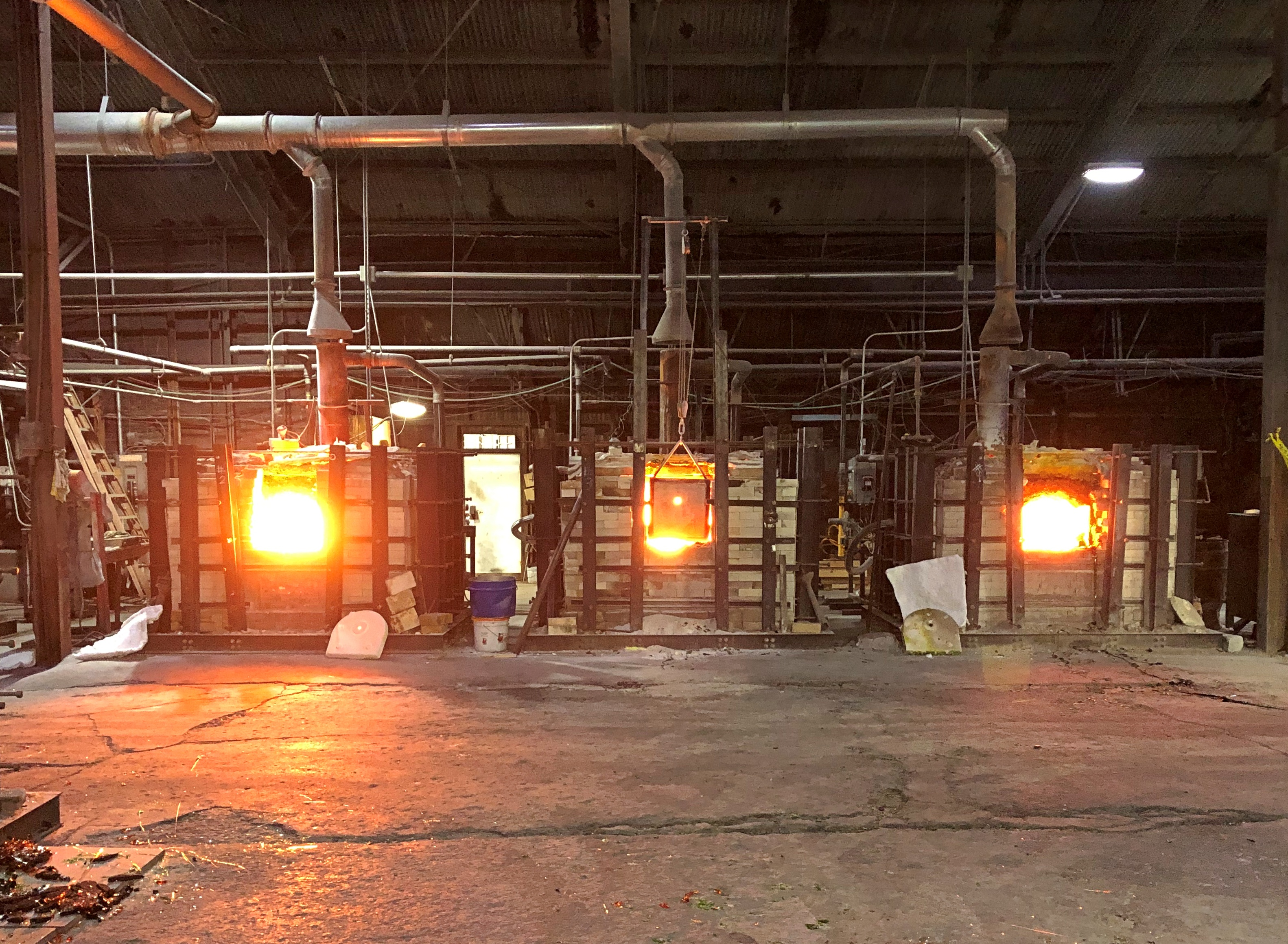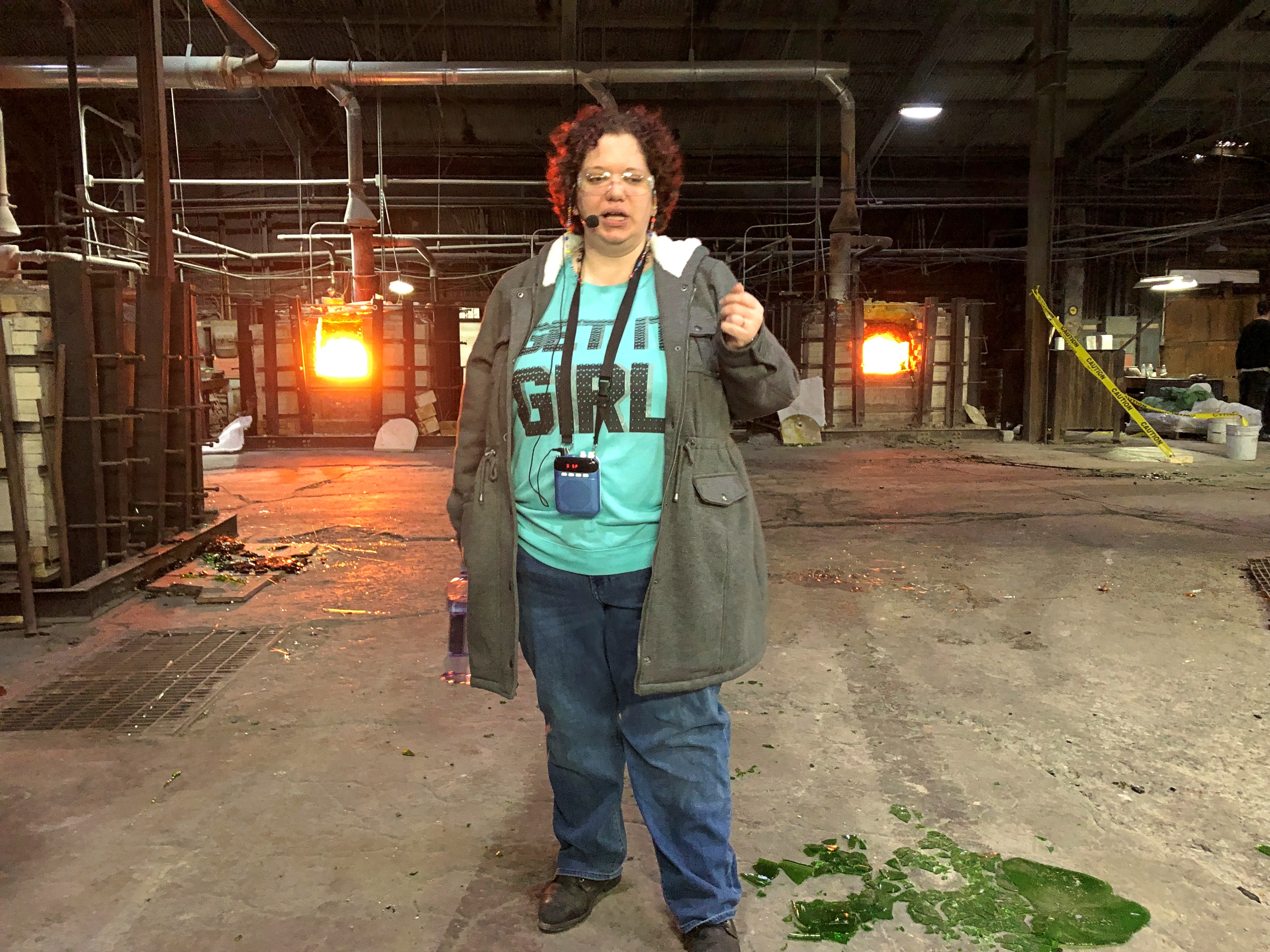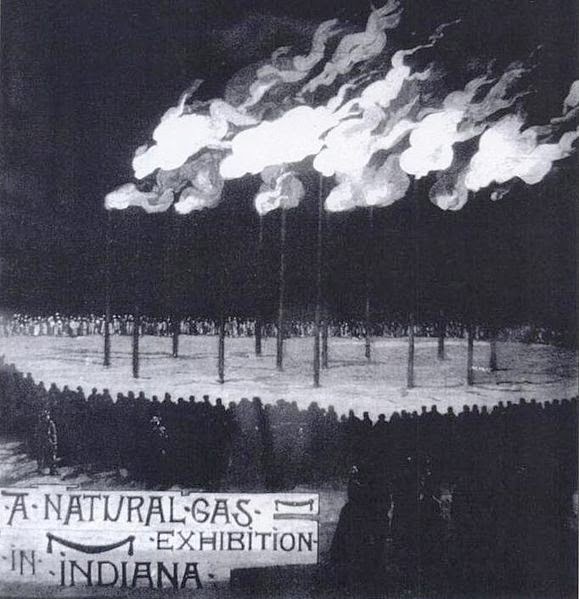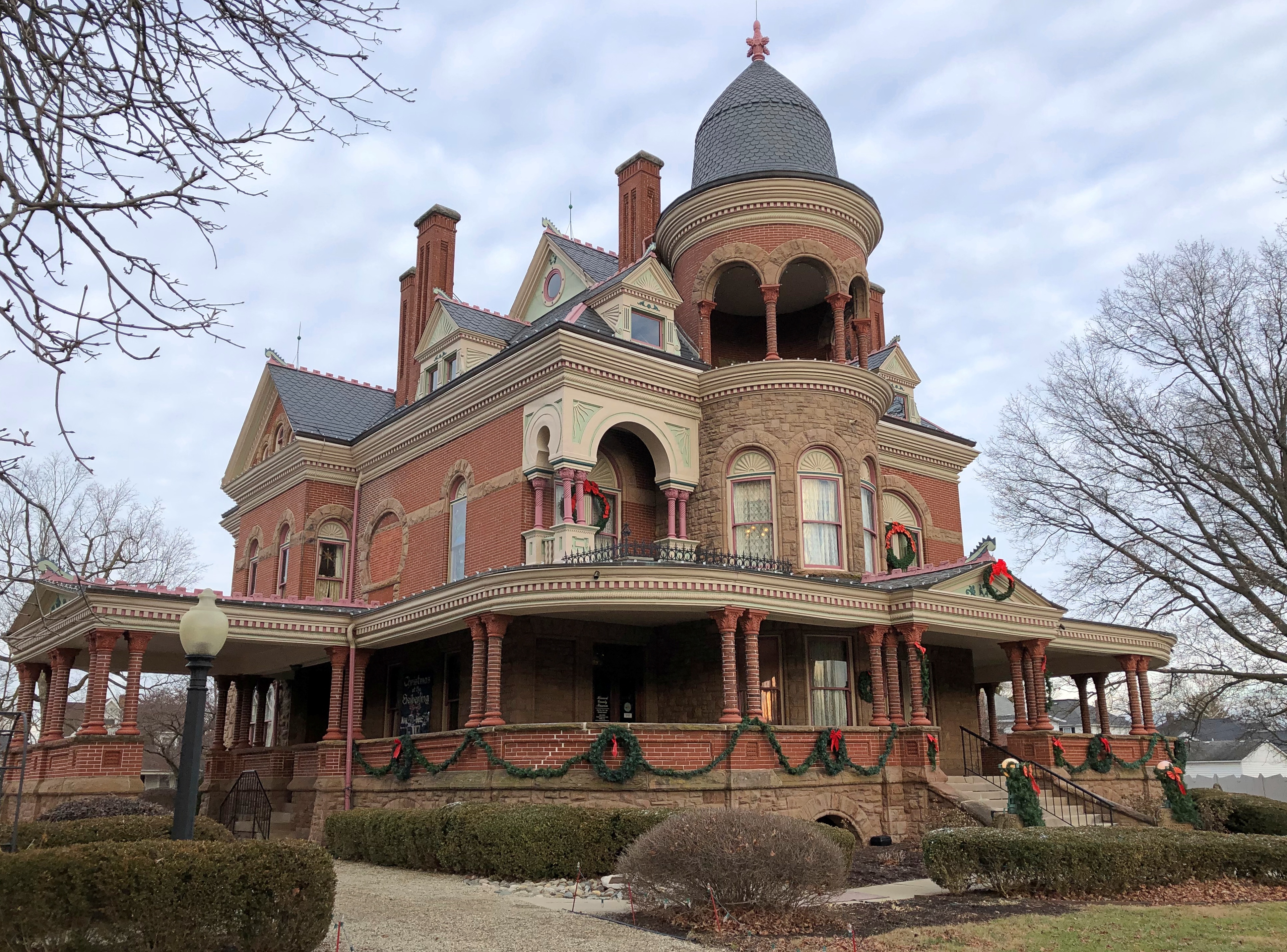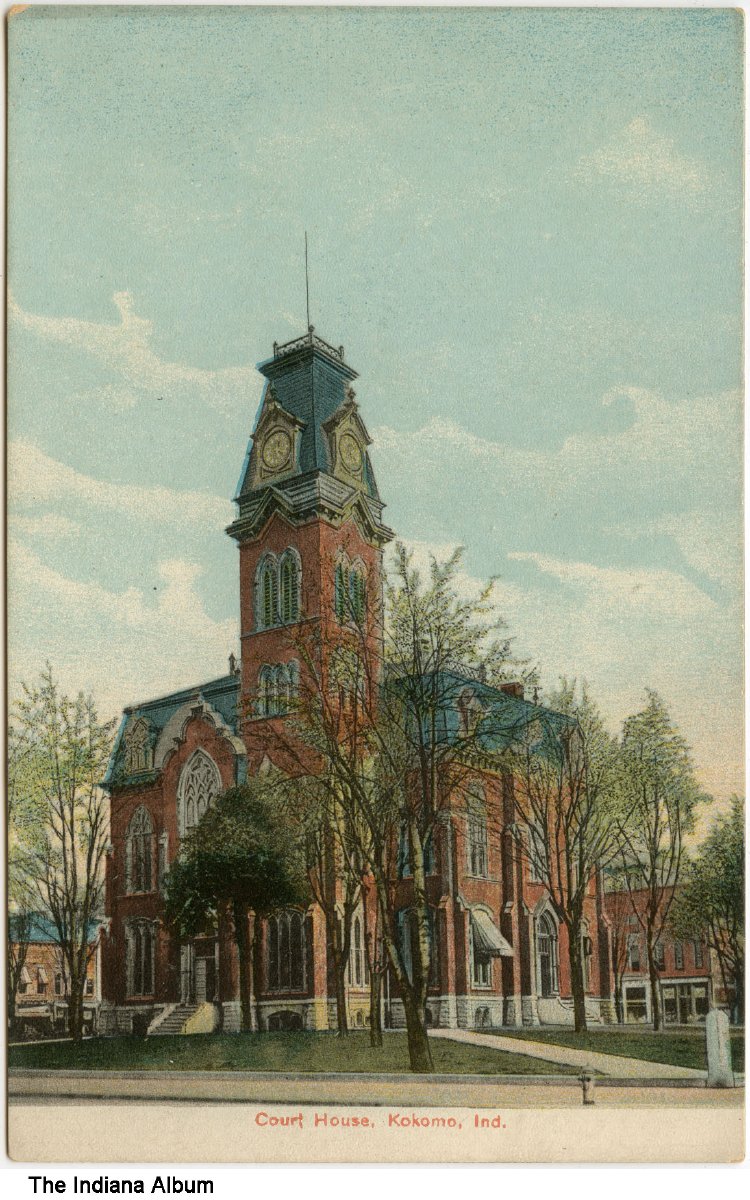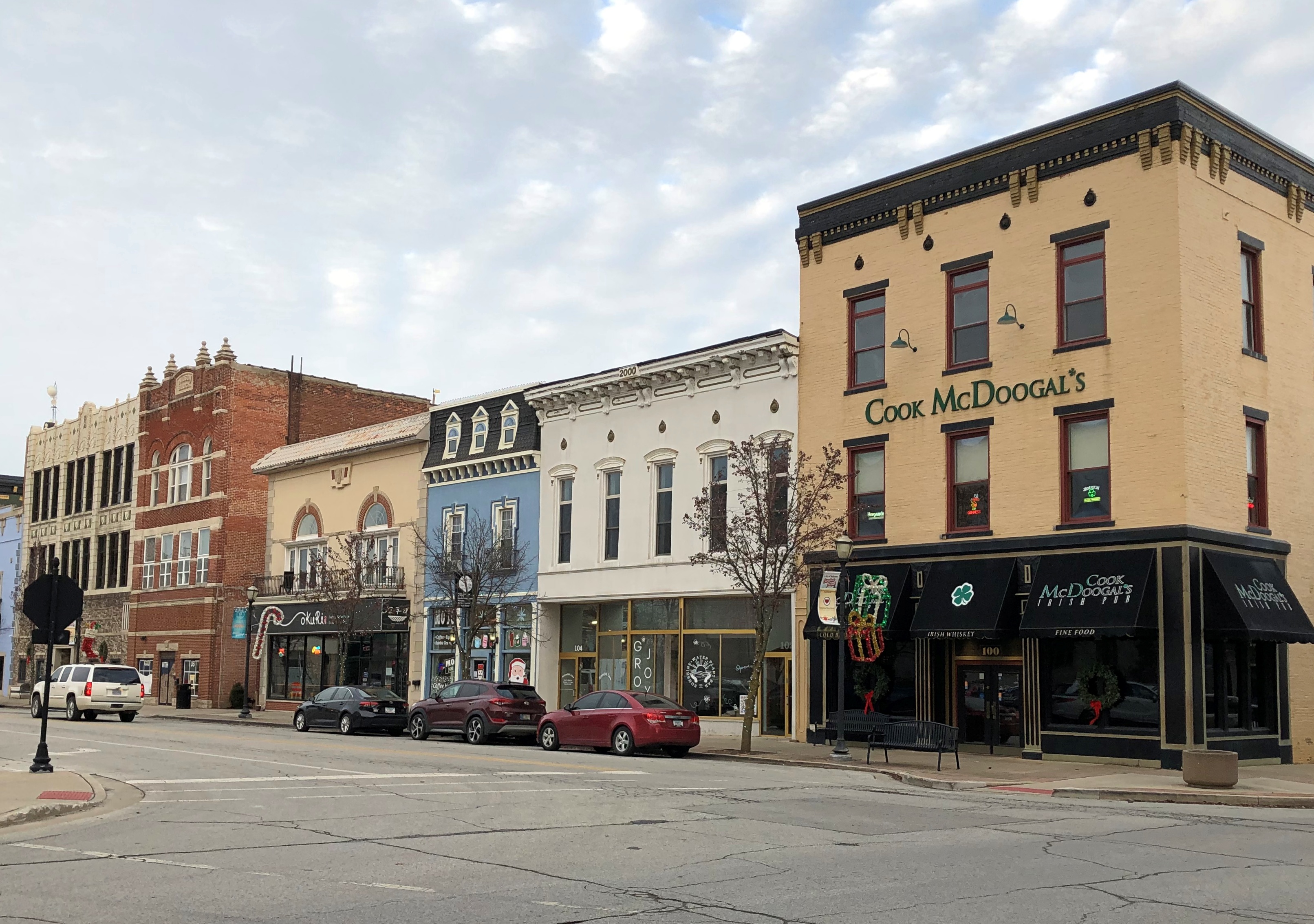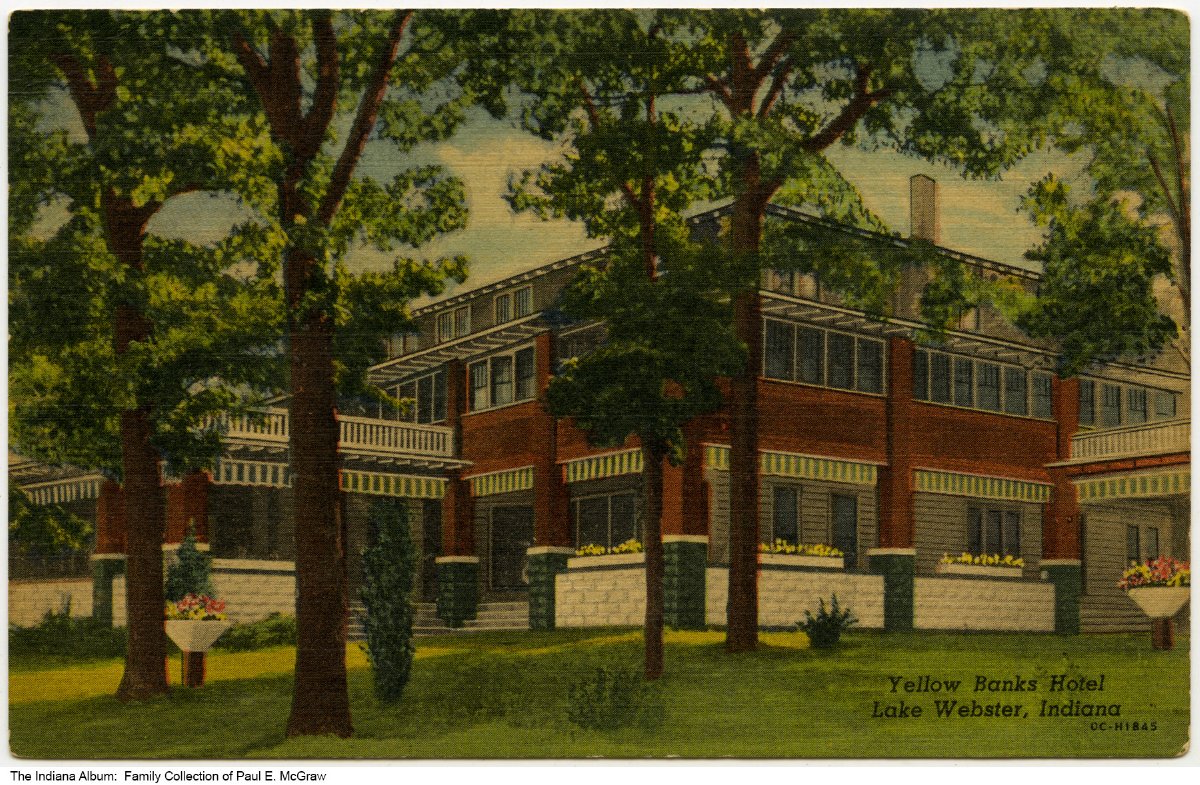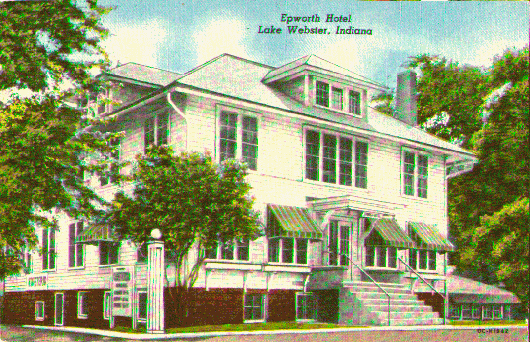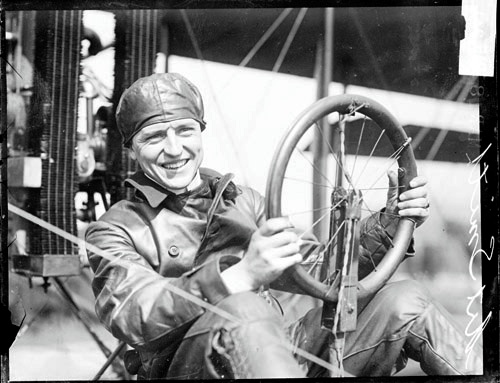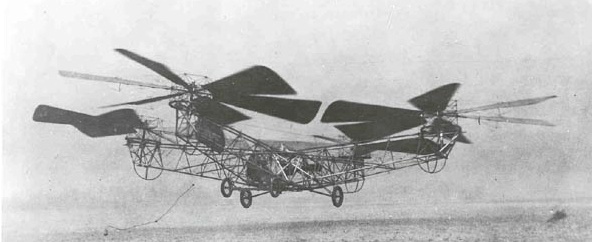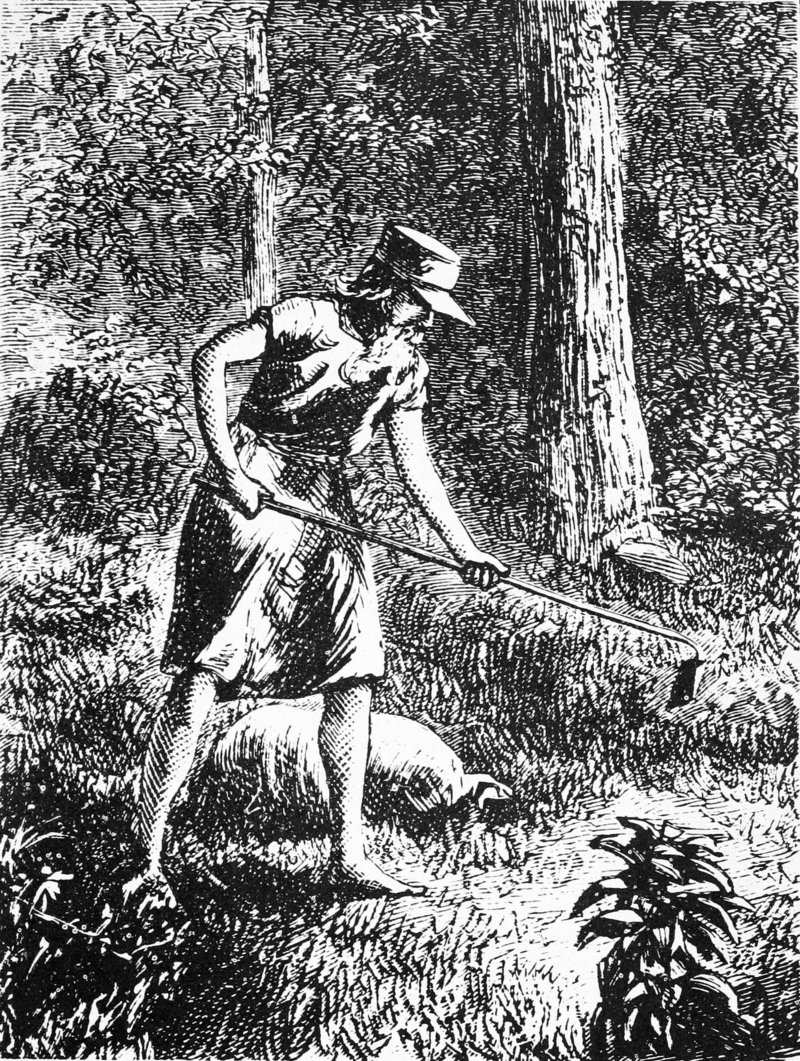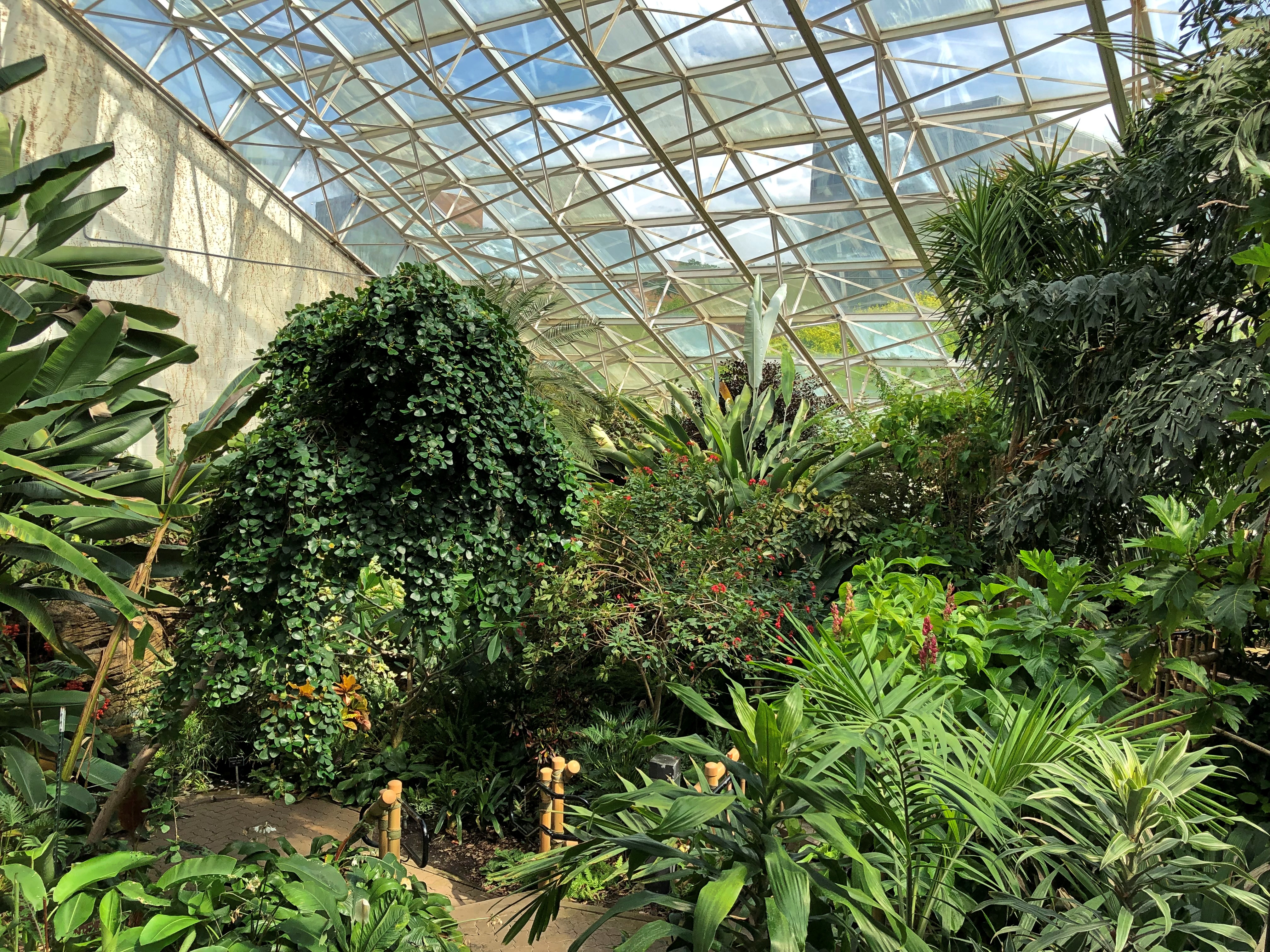Near the courthouse square in Kokomo, standing next to a fairly busy intersection and the parking lot of a small office building, is Kokomantis, all of 17 feet tall and – in late December anyway – decked out for the holidays. That’s a big bug. The kind of thing begs you to look at it.


“Its torso and wings are crafted from World War II fuel pontoons, while the legs are made from stoplight arms, giving her an industrial yet graceful appearance,” Heidi Pruitt writes in The Kokomo Post. Local artist Scott Little and developer Scott Pitcher collaborated on the work, with its creation taking Little a reported total of 220 hours.
I wasn’t sure what a “fuel pontoon” was, so I looked into it and came up with a reasonable definition from a British web site: “a self-contained floating facility for the storage and dispensing of petrol and diesel fuel for coastal sheltered marina environments.” Yep, that would have been useful in WWII.
Kokomatis isn’t the only animal of size in Kokomo. In Highland Park, one of the city’s parks, tucked away behind glass in what amounts to its own exhibition room, is the stuffed steer Old Ben (d. 1910). Impressive taxidermy, considering the age.

“Old Ben’s story began in 1902 on the farm of Mike and John Murphy between Bunker Hill and Miami near what is known as Haggerty’s crossing,” the city of Kokomo tells us. “He was the offspring of a pure bred registered Hereford bull and an ordinary shorthorn cow. Ben was a prodigy from the very beginning, as he weighed 125 pounds at birth…
“He weighed one ton at 20 months and two tons at the age of 4 in 1906. By that time, he had become quite a celebrity, and his owners exhibited him at many fairs and festivals. The Nickel Plate Railroad even ran a spur line to the Murphy farm just to help Ben in his travels.”
The article is worth reading all the way through, including for the pictures of a woman named Phyllis Hartzell-Talbert posing with stuffed Ben in 1944 at age 22 and again in 2022 at 100.
Not far from Ben, but in a different display room in the same building, is another former living thing famed (at least in Kokomo) for its size: The Sycamore Stump. Complete with explanatory notes on a sign.

A plaque you don’t see often. At least not as much as the WPA or the CCC. In this case, it’s attached to the structure housing Old Ben and the Sycamore Stump.
A New Deal jobs program for youth, including not only men, but women, and not only white youth, but blacks. It was part of the WPA for most of its existence.
Yet another item on exhibit in the park is a former Confederate cannon, one of those prizes of war that lingers long after the war. This one is a little unusual in that it isn’t out in the elements, like many.

Made by Leeds Iron Foundry in New Orleans some time before the Union occupation of the city beginning in mid-62. The cannon’s plaque explains: “Leeds made a total of 49 cannons for the South. Nine of these were 12-pound howitzers. Of these nine, only three are known to exist. Two are in the National Park Service and ours!”
One more item in the park, and it’s even bigger than Old Ben or the Sycamore Stump. A relocated covered bridge.


The Vermont Bridge, which doesn’t refer to the New England state, but instead to Vermont, Indiana, near Kokomo, where it crossed Wildcat Creek. When threatened with demolition, the city of Kokomo paid to have the bridge moved to the park in 1957 and the park district has done some renovation over the years. By 2039, it will have been in this location as long as it was in its original location.
When you see a bridge, cross it if you can, especially if traffic is light. Inside included plenty of graffiti.


Lewis Cass? Like the 1848 presidential candidate who lost to Zachary Taylor?
Yes. I remembered seeing Lewis Cass High School as we drove through Walton, Indiana, which is up the road a piece from Kokomo.
At the corner of Sycamore and Apperson streets in central Kokomo is Story Book Express.


Outside, a design on the whimsical side, using a lot of repurposed building materials from demolished structures, according to Fortune Cos. Inc., which mostly specializes in historic building restoration — and which is headed by Scott Pitcher, also of Kokomantis fame (at least in Kokomo). Inside, it’s a fairly ordinary convenience store. As the last place we visited in Kokomo, we went in for a look, and I knew I had to support this oddball convenience store in some way, so I bought a pack of gum for the drive back.


